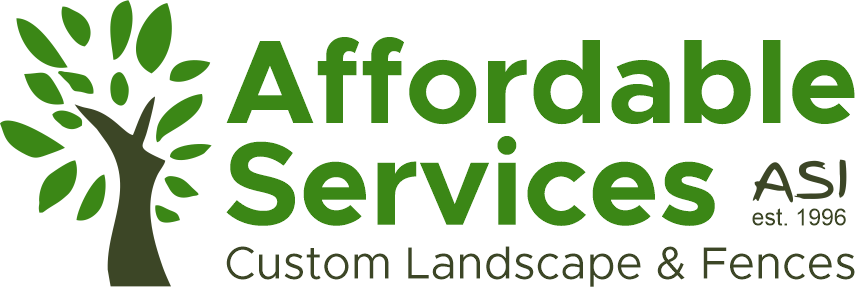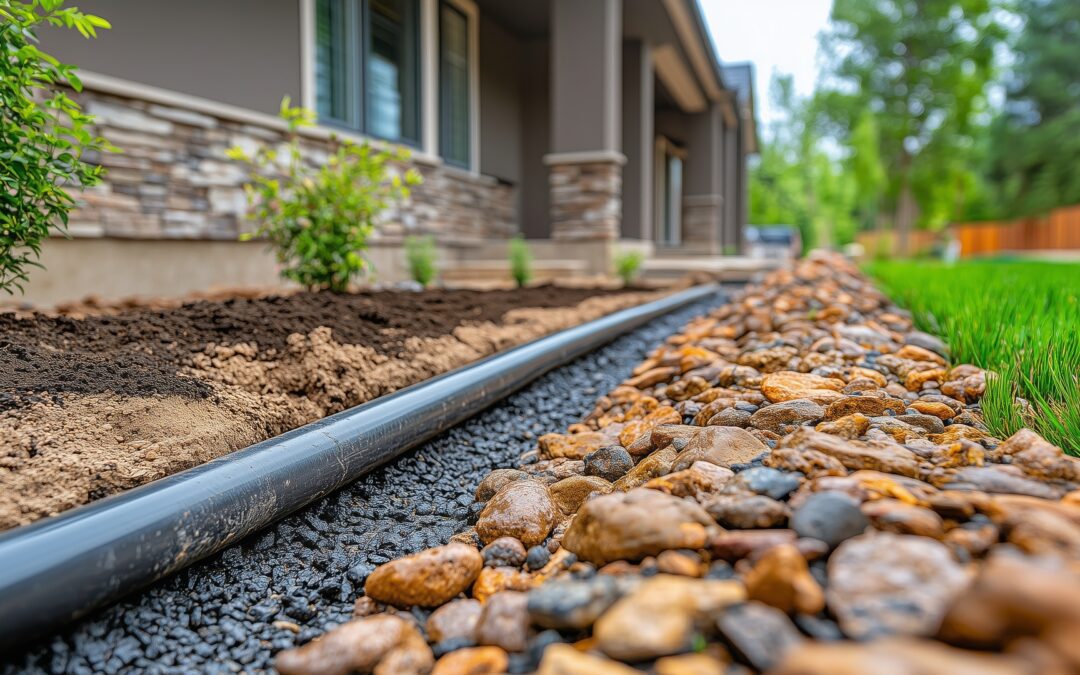Colorado Springs homeowners know that late summer often brings unpredictable weather. By August, the monsoon season can unleash sudden downpours, overwhelming yards that are not prepared to handle excess water. Without the right drainage solutions in place, these storms can leave standing water, soggy patches, and even damage to outdoor living spaces.
Now is the time to take action. Addressing backyard drainage issues before fall arrives will protect your property through the changing seasons, while also ensuring your outdoor space is ready to handle snowmelt when winter eventually rolls in.
Why Late Summer Drainage Problems Are Common in Colorado Springs
The high-desert climate of Colorado Springs may not be the first place you think of when it comes to flooding, but August storms can quickly overwhelm residential landscapes. The soil in the region is often clay-heavy, which means water tends to pool rather than drain away. Combine that with sloping yards and high-altitude weather swings, and you get backyards that simply cannot absorb heavy rainfall fast enough.
Left unchecked, poor drainage can do more than create muddy spots. Prolonged water exposure can undermine patios, wash away gravel paths, or even cause damage to your home’s foundation. For many homeowners, what begins as a small puddle in August can lead to bigger problems by spring.
Recognizing the Signs of Drainage Trouble
Before you decide on a solution, it helps to know what to look for. Some common signs of backyard drainage problems in Colorado Springs include:
-
Persistent puddles that linger for hours or days after a storm.
-
Erosion marks or washed-out areas where water has carved small channels through the soil.
-
Soft or soggy spots that remain wet even in dry weather.
-
Water flowing toward your home, rather than away from it.
-
Plant stress, such as root rot or yellowing leaves, caused by oversaturated soil.
Spotting these issues in August means you still have time to make improvements before fall’s cooler weather and early snows complicate outdoor projects.
Grading: The First Line of Defense
One of the most effective ways to control backyard flooding is proper grading. In Colorado Springs, many properties are built on sloped terrain, which can work for or against you depending on how the yard was originally shaped.
-
What grading does: Grading redirects surface water away from your home and toward a safe runoff area. By creating a gentle slope, you ensure water has somewhere to go instead of pooling around patios, decks, or the foundation.
-
When to consider it: If you notice water moving toward your house or large puddles forming near outdoor structures, grading may be the best solution.
-
Local considerations: Because of the region’s clay-heavy soil, professional grading ensures the slope is set at the right angle and directs water toward areas where it can dissipate naturally.
Grading is often the foundation for other drainage improvements, making it a good first step for homeowners who are ready to commit to long-term solutions.
French Drains: A Subsurface Solution
When surface grading isn’t enough, French drains provide an underground way to redirect water. These drains are essentially gravel-filled trenches with a perforated pipe that collects water and carries it away from problem areas.
-
How French drains help: They capture groundwater and excess runoff before it becomes standing water in your yard. This makes them ideal for low-lying areas that stay saturated after storms.
-
Advantages for Colorado Springs yards: French drains are discreet once installed, blending seamlessly into landscapes. They are especially useful in backyards with heavy clay soils, where natural percolation is slow.
-
Maintenance: While relatively low-maintenance, French drains benefit from occasional inspections to ensure they’re not clogged with debris or sediment—important in an area where monsoon storms can drop large amounts of water quickly.
By installing a French drain, you create a reliable way for water to move underground without disrupting the look of your outdoor living space.
Swales: Working With the Landscape
For larger properties or natural slopes, swales provide an eco-friendly solution. A swale is a shallow, vegetated channel that directs runoff across the yard and allows it to absorb slowly into the ground.
-
Design benefits: Swales can be integrated into the landscape design, doubling as both a drainage feature and a natural-looking garden element. By planting native grasses or other vegetation along the swale, you also help filter runoff while encouraging infiltration.
-
Why swales work in Colorado Springs: The region’s summer downpours often overwhelm flat areas, but swales give that water a designated pathway. They work especially well for properties near natural open space or where large amounts of runoff need to be managed.
-
Sustainability: Unlike concrete channels or storm drains, swales align with sustainable landscaping practices. They help recharge groundwater naturally and support local ecology.
For homeowners looking to combine function with beauty, swales are an excellent choice to control flooding without sacrificing aesthetics.
Timing Is Everything: Why Fix Drainage Now
Addressing drainage in August sets you up for success throughout the rest of the year. Colorado’s seasons bring a unique set of challenges, and fixing problems now can prevent bigger issues later.
-
Preventing fall messes: When autumn rains arrive, yards without drainage improvements can quickly become waterlogged. This makes seasonal cleanup harder and may damage hardscape features.
-
Preparing for winter: Poor drainage doesn’t just disappear once the ground freezes. Standing water in late fall can create icy patches, while oversaturated soil can expand with freezing temperatures and affect patios or foundations.
-
Protecting spring landscapes: By solving drainage issues before fall, you avoid the compounded effects of winter snowmelt and early spring rains, giving your yard a fresh start when the growing season begins again.
Natural Additions to Support Drainage
Alongside grading, drains, and swales, there are smaller, natural steps homeowners can take to support drainage and minimize flooding risk. These approaches avoid chemicals and align with sustainable practices:
-
Mulching garden beds: A thick layer of organic mulch helps soil absorb water more evenly and reduces erosion during heavy storms.
-
Adding gravel pathways: Gravel absorbs and disperses water more effectively than compacted soil, offering a functional and attractive option for walkways.
-
Planting native species: Colorado-native plants, with their deep root systems, naturally improve soil structure and help manage stormwater infiltration.
These additions can complement larger drainage improvements, creating a resilient yard that works with the local climate.
Conclusion: Don’t Let Summer Flooding Follow You Into Fall
Backyard drainage issues are more than just an inconvenience—they’re a threat to the beauty and stability of your outdoor space. In Colorado Springs, where late summer storms can be intense and unpredictable, now is the time to act. Whether through grading, French drains, or swales, tackling drainage problems in August ensures your landscape will stay dry, functional, and ready for the changing seasons ahead.
If you’ve noticed pooling water, erosion, or soggy spots after recent storms, take this as your signal to act before fall arrives. Affordable Services Colorado Springs is here to help you identify the right drainage solution for your property and ensure it’s installed with the expertise our region demands. Together, we can prepare your backyard to withstand not just summer storms, but every season that follows.






